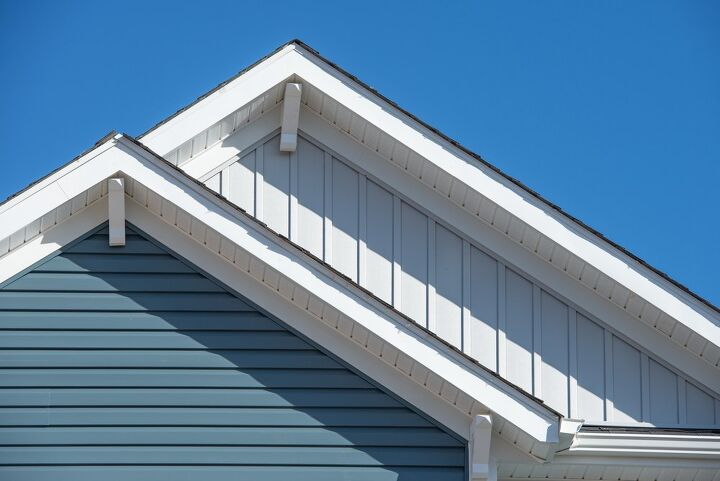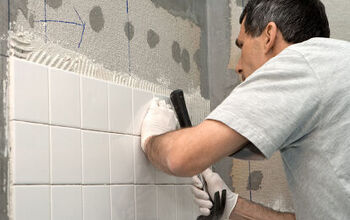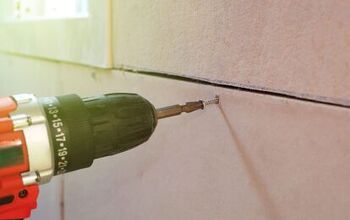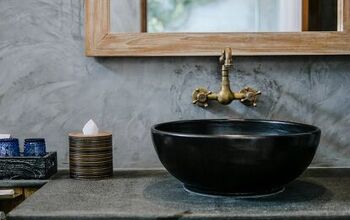Can You Paint Cement Board? (Find Out Now!)

Cement board, widely known as Hardie board, is a form of fiber cement that is commonly used on the exterior of buildings or as the backing for walls, floors, and tile applications. The boards are incredibly durable and highly resistant to fire, rot, and mold and mildew growth. When used as an exterior building material, you may be wondering: “can you paint cement board?”
Simply put, cement board can be painted. In fact, it is almost always painted when used on building exteriors. Unlike standard cement, which is not an ideal material for painting, fibrous cement boards contain pores that absorb the adhesives in the paint. However, before you can paint cement boards, the surface must be prepared properly, otherwise, you’ll have issues with adhesion.
Continue reading as we walk you through the steps to paint your own cement boards at home and provide you with some general tips for success.
Do You Need Exterior Home Paint or Stain Services?
Get free, zero-commitment quotes from pro contractors near you.

Can You Paint Cement Board?
Unlike traditional cement, cement board features pores that soak up the adhesives found in paint. This not only makes it possible to paint cement board, it also makes the board itself more durable and has a longer lifespan – even in inclement weather conditions. Though, in order to have success with painting cement board, the boards need to be prepared properly first.
Thoroughly cleaning the surface ensures that the pores in the boards are open and ready for the paint application process. If you neglect to prepare the boards, you’ll likely experience chipping and peeling of the paint.
How to Paint Cement Board
Painting cement board is not only possible, it’s also a relatively easy process. Follow the steps outlined below to tackling painting cement board as a DIY project.
Step One: Prepare the Surface
Before you start painting, the cement board surface must be thoroughly cleaned. In fact, neglecting this step is one of the biggest mistakes that DIYers make when painting cement board. To thoroughly clean the surface of the cement board, use a mild cleanser. This will help remove dirt and grease buildup, but you may also want to implement some type of cement-cleaning agent to help remove any stuck-on dirt and grime on the boards.
However, make sure that you any solutions you used are fully removed before you start painting. A pressure washer is another excellent tool that can be very effective at cleaning cement boards. Before proceeding with the rest of the painting process, make sure that no more dirt or dust remains on the surface.
Step Two: Allow Sufficient Time to Dry
You must allow enough time for the cement boards to dry completely before you can begin the application process. Paint cannot adhere properly to damp or wet surfaces. If you used any sort of liquid to clean the cement boards, we highly recommend waiting at least two days before painting. During this time, you can cover the boards with plastic wrap to prevent moisture from settling on the surface.
Step Three: Prime the Cement Boards
Both cleaning and priming cement board effectively prevents cracks, peeling, and bubbles in the long run. For best results, use solvent cement with plastic resins for priming and softening the boards. That way, the paint will adhere to the boards much easier.
Consult the instructions that come with your chosen primer for specifics. Only use high-quality cement primers to ensure a level, smooth finish. After the primer has been applied, let it dry before you move on with the paint application.
Most manufacturers produce a specialized primer that is designed to be used on their unprimed cement boards. Using the manufacturer’s brand of prime will ensure that you don’t void the warranty. When working with cement boards, it’s highly recommended to avoid oil-based primers. These primers increase the roughness of the surface of the board, prevent the paint from adhering appropriately, and can result in chalking and cracking.
Safety Note: When using paint or primer, always wear the necessary protective safety gear, including a face mask and gloves. You should also limit your time inhaling harmful fumes and only work in areas that are properly ventilated. Open windows and doors, and use fans if needed.
Step Four: Paint the Cement Boards
Once the primer has dried, you can start applying the paint to the surface of the cement board using either a paint roller or a paintbrush. Acrylic paint is the ideal choice for cement board, especially for boards that have already been primed. Apply the paint in thin layers and let each layer dry fully before applying the next one.
For best results, start by painting with a roller and smooth the wet paint out by lightly brushing it with a three to four-inch latex paintbrush. Work fast before the paint starts to dry. To ensure depth, color stability, and durability, apply three to four layers of paint to the cement board. Wait approximately three hours between coats, applying each using the same method.
Keep an eye out for cracks and bubbles on the surface as you’re painting. If cracks or bubbles do pop up, you’ll have to halt the painting process, strip the surface, and start again with re-applying the cement primer.
Step Five: Apply a Sealant
After you’ve allowed two days for the paint to dry, you can apply a paint sealer to the cement board. Following the packaging instructions for the appropriate application method. After the recommended drying time, your cement board is ready to be installed.
Do You Need Exterior Home Paint or Stain Services?
Get free, zero-commitment quotes from pro contractors near you.

Tips for Success
To achieve the best results from painting cement board, follow these tips for success:
- Always make sure the boards are clean before starting the process.
- Complete any necessary caulking work and make sure to use caulk that is paintable.
- Mask windows and trim and cover nearby surfaces with drop cloths.
- Finish all cut edges of the cement boards with a primer that is recommended for use with fiber cement boards.
- Opt for a satin finish paint, even if it’s more expensive.
- If you choose to apply the paint using a sprayer, backbrush, or backroll to make sure that paint properly adheres.

Jessica considers herself a home improvement and design enthusiast. She grew up surrounded by constant home improvement projects and owes most of what she knows to helping her dad renovate her childhood home. Being a Los Angeles resident, Jessica spends a lot of her time looking for her next DIY project and sharing her love for home design.
More by Jessica Stone



























